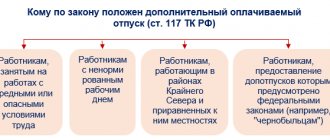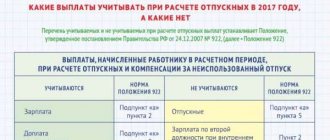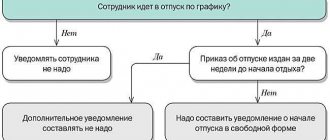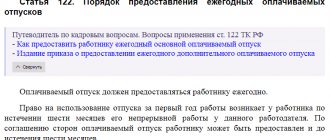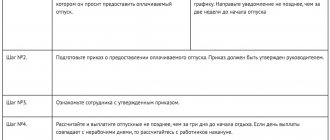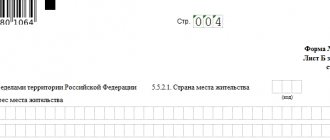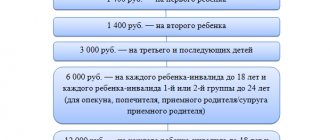Is an employee entitled to additional annual rest: how to determine this?
The rules of the Labor Code of the Russian Federation directly guarantee additional paid leave for:
- specialists in harmful or dangerous industries;
- employees of organizations with a special nature of work;
- specialists with irregular schedules;
- workers in the Far North and in regions equivalent to it;
- athletes (Article 116 of the Labor Code of the Russian Federation, Article 348.10 of the Labor Code of the Russian Federation).
Additional rest can also be provided for sanatorium treatment in the event of an insured event (for example, an industrial accident). ConsultantPlus experts explained how to provide additional leave in this case. Get trial access to the K+ system and move on to the Ready-made solution for free.
Other legal grounds for assigning additional paid leave to a person can be recorded:
1. In the provisions of other federal sources of law.
For example, enshrined in clause 5.1 of Art. 11 of the Law “On the Status of Military Personnel” dated May 27, 1998 No. 76-FZ, according to which military personnel with the status of combat veterans can take paid rest, which is added to the main one, lasting 15 days.
2. In the local regulations of the employer.
Here, additional rest can be established for any categories of specialists.
Annual additional leave must be separated from extended rest (longer than the usual 28 days according to Article 115 of the Labor Code of the Russian Federation), which is assigned, for example:
- teachers (in the manner prescribed by Article 334 of the Labor Code of the Russian Federation);
- employees of law enforcement agencies, civil servants (in accordance with individual federal sources of law).
An employee receiving extended leave can fully take advantage of the additional rest period, if there are grounds for this.
The duration of annual additional paid leave depends on its specific type. Let us study, as an example, what duration vacations can have for the categories of workers specified in the industry-wide standards of Art. 116 Labor Code of the Russian Federation.
Additional rest from the director
Article 116 of the Labor Code of the Russian Federation allows employers to set extended leave for employees on their own initiative. The decision must be spelled out in the company’s local regulations - collective agreement, employment contracts, internal regulations.
Such additional rest is also paid.
But if the employer has the right to attribute the main vacation pay (payment for 28 calendar days) to a decrease in profits, then additional payments can only be made at the expense of the company’s profits. Example 2. What amounts of vacation pay are not taken into account for tax purposes?
For company employees with two or more children, the collective agreement provides for additional paid leave of 5 calendar days. The monthly salary of an employee with two children is 25,000 rubles. From August 1, he is granted another annual leave. It includes 28 calendar days of main leave plus 5 calendar days of additional leave. The billing period includes August - December of the previous year and January - July of the reporting year. The amount of payments for the billing period taken into account when paying for vacation will be 300,000 rubles. (25,000 rubles × 12 months), average daily earnings – 853.24 rubles. (300,000 rubles: 12: 29.3). The accountant accrued vacation pay: main vacation 23,890.72 rubles. (853.24 rubles × 28 calendar days); additional leave 4266.20 rubles. (853.24 rubles × 5 calendar days). When taxing profits, you can take into account the amount of 23,890.72 rubles. Amount 4266.20 rub. is paid from the company’s own funds and is not taken into account when taxing profits.
But insurance premiums for additional vacations paid at the initiative of the employer are assessed on a general basis.
Expert “NA” S.M. Lvovsky
Calculation of additional days for vacation in harmful or hazardous production: nuances
The duration of the type of vacation under consideration is at least 7 days (Article 117 of the Labor Code of the Russian Federation). Longer rest for specialists in harmful or dangerous production can be established by a contract with the employer, taking into account:
- norms of collective agreement;
- norms of industry or inter-industry agreement;
- results of a special assessment of working conditions.
You can familiarize yourself with the features of conducting a special assessment of working conditions at an enterprise in this article.
An additional period of rest for the category of workers in question is provided based on the fact that during the 12 months (for which the corresponding leave is given) the person worked in harmful or dangerous work. If he worked some part of the time under normal conditions, then this time is not taken into account when calculating the duration of the additional rest period (Article 121 of the Labor Code of the Russian Federation).
ATTENTION! If, based on the results of a special assessment, working conditions are found to be safe, additional rest is not provided (Part 4 of Article 219 of the Labor Code of the Russian Federation).
An important nuance: if there are several legal grounds for assigning additional paid leave for harmful working conditions, the corresponding rest is given only on 1 basis (clause 18 of the Instruction, approved by the appendix to the resolution of the State Committee for Labor of the USSR and the All-Russian Central Council of Trade Unions dated November 21, 1975 No. 273/P-20).
If you have access to ConsultantPlus, check whether you have correctly determined the duration of additional leave for an employee employed in hazardous work. If you don't have access, get a free trial of online legal access.
In what cases is additional leave granted?
DO is provided only to certain categories of employees based on the following sources:
- Labor Code.
- Letters from Rostrud.
- Decrees of the Government of the Russian Federation.
DO can be issued both as compensation for certain working conditions, and as an incentive for long service in the organization, length of service. Let us consider in detail all cases of providing DO.
When working in harmful or dangerous conditions
The mandatory provision of supplementary care to people working in harmful or dangerous conditions is regulated by Article 117 of the Labor Code of the Russian Federation. These conditions include:
- Mining works underground.
- Open pit mining (for example, in quarries).
- Activities involving interaction with harmful chemical, biological and other elements.
The minimum duration of DO in this case will be 7 days. This duration is stipulated in paragraph 1 of Government Decree No. 870.
One of the documents on the basis of which leave is granted is the List of industries with hazardous working conditions, approved on November 25, 1974. In it, the recommended duration of pre-term training is expressed without taking into account weekends. Depending on the position, the employee may be given 6-36 days of rest.
IMPORTANT! The employer has the right to increase the duration of DO. This decision needs to be consolidated with the help of a number of internal documents: labor and collective agreements, regulations on the procedure for granting vacations.
We wrote in more detail about additional leave under hazardous working conditions in the next article.
For special work
The provision of subsidiaries to employees whose work is of a special nature is stipulated in Article 118 of the Labor Code of the Russian Federation. The list of such “special” types of activities is approved by the Government of the country. DO is issued to the following categories of employees:
- General practitioners and nurses, subject to continuous work for three years.
- Employees of the territorial power structures of the Chechen Republic or seconded to the Republic.
- Transport and communications workers with a special nature of work.
Not all categories of employees entitled to DO are listed in the Labor Code. For example, employees of bodies of the Chechen Republic are granted leave on the basis of the relevant resolution.
During irregular working hours
Irregular working hours presuppose a regime in which the employer can involve an employee in performing job functions outside the established schedule. An employee's activities beyond the established working day do not provide for payment of compensation in cash. Compensation is provided by the provision of paid subsidiaries.
More information about granting additional leave for irregular working hours can be found in a separate article.
In case of irregular working hours, an annual supplement is provided, the minimum duration of which is 3 days (specified in Article 119 of the Labor Code). The employer does not have the right to reduce the duration of the period, but may increase its duration. The maximum duration of rest was approved by paragraph 8 of the Rules “On DOs” dated April 30, 1930. According to the still valid law, vacation can last up to 14 days (calendar). The procedure for granting leave is established by Government Decree No. 884.
What should an employer consider when determining the duration of additional rest? Typically, the length of rest depends on whether the employee is often involved in overtime work. If this is a rare practice, then the vacation will be short.
IMPORTANT! An employee’s irregular working hours must be recorded in employment contracts and collective agreements. This need is stipulated in Article 57 of the Labor Code of the Russian Federation.
When working in the Far North
The minimum duration of additional training when working in the Far North is approved by Article 321 of the Labor Code of the Russian Federation:
- When working in the Far North - 24 days.
- When working in territories with conditions equivalent to the Far North - 16 days.
Also, leave, according to Article 302 of the Labor Code of the Russian Federation, is granted to persons working on a rotational basis in the Far North.
According to Article 322 of the Labor Code, two annual leaves can be combined. The total duration of such rest should not be more than six months. If, when adding both DOs, the duration exceeds 6 months, the remainder is redistributed to the next vacation. For example, when adding two DOs, the result was a duration of 7 months. One month will be added to the next additional leave.
When working part-time
The definition of part-time work is set out in Article 282 of the Labor Code of the Russian Federation. According to the Code, this is the performance of certain work in free time from main work. Such work will be part-time only if it is regular. The specifics of providing subsidiaries in this situation are stipulated in Article 286 of the Labor Code of the Russian Federation. Leave at the place of part-time work is granted simultaneously with leave at the main place of employment. If a person worked in the first place for less than six months, and therefore cannot count on vacation, then the DO is issued in advance.
In case of occupational disease
If an employee’s illness or disability was caused by an emergency at work, the employer is obliged to provide DO. It is issued so that the employee can receive full-fledged sanatorium-resort treatment. The time it takes a person to travel to the resort is added to the vacation period. DO is paid for from the Social Insurance Fund.
For medical workers
The right to additional leave is granted only after an assessment of working conditions has been carried out. This procedure is stipulated by Article 116 of the Labor Code of the Russian Federation. If conditions are determined to be harmful or dangerous upon assessment, employees may be eligible for additional rest. Let's consider the duration of preschool education for various categories of health workers:
- Doctors of psychiatric institutions providing direct care to patients – 35 days.
- Psychiatric hospital laboratory staff – 21 days.
- Doctors providing anti-tuberculosis care – 14 days.
- Employees of X-ray laboratories in anti-tuberculosis hospitals - 21 days.
- Doctors providing care to HIV-infected people – 14 days.
This list is given in Government Decree No. 482 of June 6, 2013. If an employee has several grounds for obtaining additional permission, only one is selected. For example, a person simultaneously helps HIV-infected people and works in a psychiatric institution. On the first basis, he is entitled to 14 days of leave, on the second - 35 days. Duration BEFORE will not be cumulative. The duration of the vacation will be 35 days.
For pensioners
Working pensioners can only count on unpaid DO. Its duration is 14 days. If a pensioner has a registered disability, the duration of leave increases to 60 days.
For combat veterans
Additional leave for veterans is provided on the basis of the following regulatory framework:
- Federal Law No. 5 “On Veterans”.
- Federal Law No. 76.
- Articles TC 128, 116, 125.
The state provides veterans with the following benefits:
- Possibility of receiving annual leave at any convenient time.
- Unpaid leave up to 35 days.
- Paid in advance for up to 15 days.
Combat veterans include members of the flight crew, employees of military units and those who were wounded.
For invalids
The law does not provide for a special preschool for people with disabilities. Additional days of rest are provided on a general basis. For example, if a disabled person works in difficult conditions.
IMPORTANT! The employer has the right to provide additional benefits to employees with disabilities. This benefit is fixed in collective agreements and regulations of the enterprise.
We talk in more detail about additional leave for disabled people of groups 2 and 3 in another article.
What is the duration of rest for the special nature of the work?
This type of leave is provided for in Art. 118 of the Labor Code of the Russian Federation and establishes, in particular:
- for employees sent to the Chechen Republic - lasting 2 days for each full month of work (clause 5 of the Decree of the Government of the Russian Federation of December 31, 1994 No. 1440);
- for medical specialists in general practice - lasting 3 days for continuous work in positions held for more than 3 years (clause 1 of the Decree of the Government of the Russian Federation of December 30, 1998 No. 588).
Government regulations may establish other legal grounds for sending workers on vacation for special working conditions.
In the provisions of a number of regulations, one can find grounds for assigning additional paid leave for working in special conditions in combination with other vacation privileges.
For example, according to the provisions of sub. 1 clause 1 and clause 4 art. 58 of the Law “On Service in Internal Affairs Bodies” dated November 30, 2011 No. 342-FZ, law enforcement officers have the right to an additional rest period of up to 10 days for service in special conditions. This is not counting the fact that security forces also have extended regular leave - 30 days in a region with a normal climate, 45 days in the Far North (Clause 1, Article 57 of Law 342-FZ).
How does experience affect?
To qualify for leave, an employee must have work experience at a specific enterprise.
Annual basic leave of 28 days is granted after 12 months from the date of commencement of continuous employment in this organization. This period is a working year, and it is individual for each employee. If there were periods during the year that were not included in the length of service, the end of the working year is postponed by the appropriate number of days.
Starting from the second working year, an employee can take another vacation at any time he chooses or in accordance with the vacation schedule approved by the enterprise. If he uses it and is fired before the end of the current work year, compensation for those days will be withheld from him.
As soon as an employee has worked for the organization for six months, he is entitled to use the main leave. By agreement with the management or in accordance with the established rules of the organization, recorded in local regulations, rest can be provided before this period, “in advance”. Moreover, it is fully paid
.
The employer is obliged to provide leave before the expiration of six months upon application:
- employees who have not reached the age of majority;
- women during the period before and after childbirth (and their husbands at their request);
- those who have adopted young children (up to three months);
- part-time workers, if they are granted leave at their main place;
- spouses of military personnel (simultaneously with the spouse's main leave);
- people exposed to radiation during the Chernobyl disaster;
- war veterans;
- honorary donors.
If an employee works under an employment agreement for a period of two months or less, he is also entitled to paid leave and compensation in the amount of two days for each month worked.
Seasonal workers also have the right to rest; it is calculated in the same way - 2 days per month.
What is the rest period for employees with irregular working hours?
The type of additional paid leave in question is assigned to specialists with an irregular work schedule, and the duration of such rest should not be less than 3 days (Article 119 of the Labor Code of the Russian Federation, clause 3 of the Rules for the provision of additional leave, approved by Decree of the Government of the Russian Federation of December 11, 2002 No. 884).
The list of positions in which work is carried out according to an irregular schedule is established by the employing company in local regulations (Article 101 of the Labor Code of the Russian Federation). The contracts of employees holding such positions also indicate information about the corresponding schedule (Article 57 of the Labor Code of the Russian Federation).
In this case, it does not matter what hours the employees in “irregular” positions actually worked: even if their work hours completely coincided with those established for workers with a standard 8-hour schedule, nevertheless, their schedule is considered irregular and gives the right to the type of rest in question (letter of Rostrud dated May 24, 2012 No. PG/3841-6-1).
Additional paid leave for working abroad
Decree of the Government of the Russian Federation dated April 21, 2010 No. 258 approved the list of states for work in which an employee is granted additional annual paid leave.
An employee receives additional paid leave if he works in difficult climatic conditions, unfavorable ecology, during an epidemic or military operations, epidemiological danger, unstable socio-political situation, or high crime.
The minimum duration of annual additional leave for foreign workers is 3 calendar days. The exact dates of vacations are established by order of the Ministry of Foreign Affairs of the Russian Federation dated August 8, 2011 No. 14299. The duration of vacations ranges from 3 to 15 calendar days, depending on the country.
How long is the additional holiday in the Far North?
In general, workers in the Far North are assigned 24 days of additional paid leave, and workers in those parts of the country that are equivalent to it are assigned 16 days (Article 321 of the Labor Code of the Russian Federation). If the region in which a person works is not northern, but the law defines a regional coefficient and bonus for it, then the duration of the additional leave will be 8 days (Article 14 of the Law of the Russian Federation “On State Guarantees for Persons in the Far North” dated February 19, 1993 No. 4520-1 ).
Moreover, if the law establishes other privileges for certain categories of workers in the Far North in terms of determining the duration of rest, then they can supplement those reflected in Art. 321 Labor Code of the Russian Federation.
Thus, we noted above that law enforcement officers in the Far North, in accordance with paragraph 1 of Art. 57 of Law 342-FZ receive basic (extended) rest of 45 days. A worker entitled to this privilege by virtue of his status will also be able to take advantage of a separate additional rest period of 24 days on the basis of Art. 321 Labor Code of the Russian Federation.
How are additional vacation days paid?
Example 1
Additional leave is provided along with the main leave. The employee went on paid leave of 28 days, after which he was given an additional one of 8 days.
- We calculate the salary for the billing period: 23,000 rubles (monthly salary) * 12 months = 276,000 rubles.
- We calculate the average daily salary: 276,000 rubles: 352.8 (number of days in the billing period) = 782.31 rubles.
- We calculate the amount of vacation pay: 782.31 * 36 days = 28,163 rubles.
Example 2
Additional leave is provided separately from the main one. The employee was sent on paid additional leave for 10 days. His salary in the billing period was 19,000 rubles.
- Determines the amount of payments for the billing period: 19,000 * 12 = 228,000 rubles.
- We determine the average daily earnings: 228,000: 352.8 = 646.2 rubles.
- We determine the amount of vacation pay: 646.2 * 10 = 6462 rubles.
When are primary and additional holidays granted under the Labor Code of the Russian Federation?
Basic and additional paid leave can:
1. Provided separately.
2. Provided simultaneously (by combining all days of both types of vacation).
2. To be summed up and provided in parts (Article 125 of the Labor Code of the Russian Federation):
- in accordance with the agreement between the parties to the employment contract;
- provided that the duration of at least 1 period of continuous rest for the employee will not be less than 14 days.
Both leaves are generally granted after 6 months of employee’s work in the company (Article 122 of the Labor Code of the Russian Federation). In relation to both types of vacation, the rule applies according to which weekends are included in vacation, and non-working holidays are excluded when calculating its duration (Article 120 of the Labor Code of the Russian Federation).
Thus, from the point of view of the provisions of the Labor Code of the Russian Federation, the main and additional rest periods have much in common. But from the point of view of tax legislation, the difference between them can be quite significant in a number of legal relations. Let's study this nuance in more detail.
Popular questions
Is additional leave provided to working pensioners? Answer:
Yes, if we are talking about unpaid leave by the employer of up to 14 days per year.
Combat veterans? Answer:
Veterans in the reserve are not entitled to additional paid leave; active veterans in the reserve are entitled to 15 days of additional paid leave.
What if the child is disabled? Answer:
Yes, an employee who has a disabled child is granted an additional 14 days of administrative leave without pay.
Electric and gas welder? Answer:
Yes, it is available. Duration - 14 calendar days.
Group 3 disabled person? Answer:
Additional paid leave for a disabled person of group 3 is granted only on a general basis (maternity leave, educational leave, etc.).
You can find out how to get maternity benefits by reading our thematic material. Sick leave payments do not always go smoothly. You can find out how to arrange them correctly here!
How to correctly make entries in employee salaries - read our article.
Payment for additional rest from the point of view of tax legislation: nuances
In the process of maintaining tax records, an employer providing additional rest periods to employees should keep in mind that:
1. Vacation pay paid for additional rest during harmful and dangerous work can be included in the company’s expenses (clause 24 of Article 270 of the Tax Code of the Russian Federation) if:
- the rest period does not exceed what is required by law - in full;
- the provision of additional rest is regulated by an employment contract, local regulation or other source of norms other than the collective agreement, also in full.
And if voluntary additional paid leave is assigned specifically under a collective agreement, then the inclusion of vacation pay in this case in expenses is not allowed (letter of the Ministry of Finance of Russia dated May 31, 2016 No. 03-03-06/3/31323, resolution of the Ninth Arbitration Court of Appeal dated June 5, 2009 No. 09AP-8089/2009-AK).
Firms should also expect that Federal Tax Service inspectors will primarily focus on Art. 270 Tax Code of the Russian Federation. The fact is that tax reporting, in general, does not include internal personnel regulations, and inspectors, by default, can consider collective agreements as a source of rules establishing additional vacations in a company.
2. In some cases, vacation pay for additional paid leave may be exempt from personal income tax and social contributions, for example, paid to participants in the liquidation of the Chernobyl accident. According to the Ministry of Finance, they are not related to the performance of labor functions and should be equated with compensation payments, which, according to clause 3 of Art. 217 of the Tax Code of the Russian Federation are not taxed (letter of the Ministry of Finance of the Russian Federation dated 06/01/2007 No. 03-04-06-02/8). In other situations, additional leave is subject to personal income tax and insurance contributions in the general manner.
How to account for vacation expenses
With regard to expenses for employee vacations, the Tax Code of the Russian Federation has two direct rules.
Clause 7 of Article 255 of the Tax Code of the Russian Federation states that labor costs include the costs of paying average earnings retained by the employee during the vacation period provided for by the legislation of the Russian Federation.
Paragraph 24 of Article 270 of the Tax Code of the Russian Federation establishes that payment for vacations additionally provided on the basis of collective agreements, that is, in excess of those provided for by the Labor Code of the Russian Federation, is not included in expenses.
This means that if additional leaves are provided in accordance with the requirements of labor legislation, then the costs of paying for them are taken into account as part of the costs of
wages. If an organization, on its own initiative, pays for additional vacations on the basis of a collective agreement, then it cannot take these amounts into account in income tax expenses.
Therefore, it is necessary to clearly distinguish what the employer’s obligation to provide and pay for additional leave is.
Let us recall that for all cases of payment of vacations under the Labor Code of the Russian Federation, a single calculation procedure has been established - from a billing period of 12 calendar months and the amount of payments accrued for this period, divided by 29.3 (Article 139 of the Labor Code of the Russian Federation).
All accrued payments are taken into account in tax expenses. Example 1. What amounts of vacation pay are taken into account for taxation?
A company employee works under irregular working hours. By order of the manager, he was given additional leave of 10 calendar days. The employee's monthly salary is 35,000 rubles. From August 1, he was granted another annual leave. It includes 28 calendar days of main leave and 10 calendar days of additional leave. The billing period includes August - December of the previous year and January - July of the reporting year. The amount of payments for the billing period taken into account when paying for vacation will be 420,000 rubles. (35,000 rubles × 12 months), average daily earnings – 1194.54 rubles. (420,000 rubles: 12: 29.3). The accountant accrued vacation pay in the amount of 42,382.52 rubles. (RUB 1,194.54 × (28 calendar days + 10 calendar days)). The entire amount of vacation pay can be taken into account when taxing profits.
Results
Additional paid leave can be assigned to an employee on various grounds: prescribed in the Labor Code of the Russian Federation, enshrined in other federal regulations, reflected in local regulations. Its duration depends on the specific basis. It also determines the specifics of tax accounting when paying a worker for an additional period of rest.
You can find out more about the specifics of additional vacations in the articles:
- “Additional leave for irregular working hours”;
- “Are working pensioners entitled to additional leave?”.
Calculate your vacation pay correctly. Our online calculator will help you with this.
Sources: Labor Code of the Russian Federation
You can find more complete information on the topic in ConsultantPlus. Free trial access to the system for 2 days.
Employer's liability for failure to provide additional leave
Compliance with the labor rights of its employees is the direct responsibility of every employer, for failure to comply with which he bears a certain responsibility.
There are often cases when employers refuse to provide their employees with
them additional leave. In this case, the employee whose rights have been violated may apply to the court to seek monetary compensation.
The result of such a dispute may be: a fine, temporary suspension of work (up to 3 months) and disqualification of a legal entity. persons for a period of up to 3 years.
Duration of additional leave for Chernobyl victims
The EDOO provided to Chernobyl victims can be of varying duration.
Thus, persons affected by radiation as a result of the disaster at the Chernobyl nuclear power plant are entitled to 14 days of rest. These employees are entitled to this leave regardless of the location of the employer.
Another thing is that those who are currently working in resettlement zones, a residence zone with the right to resettlement and a residence zone with preferential socio-economic status are entitled to 21, 14 and 7 calendar days - depending on the time of residence and work in the relevant zone and health damage caused by radiation. Let's take a closer look.
So, 14 calendar days of vacation are due, in particular, to the specified categories of workers who suffered due to exposure to radiation due to the Chernobyl disaster:
- those who received or suffered radiation sickness and other diseases due to radiation or during work to eliminate the consequences of an accident (clause 1, part 1, article 13, clause 5, part 1, article 14 of the Law of the Russian Federation of May 15, 1991 No. 1244-1 , Appendix No. 1 to the order of the Ministry of Emergency Situations of Russia No. 728, the Ministry of Health and Social Development of Russia No. 832, the Ministry of Finance of Russia No. 166n dated December 8, 2006);
- disabled people (clause 2, part 1, article 13, clause 5, part 1, article 14 of the Law of the Russian Federation of May 15, 1991 No. 1244-1, Appendix No. 1 to the order of the Ministry of Emergency Situations of Russia No. 728, the Ministry of Health and Social Development of Russia No. 832, the Ministry of Finance of Russia No. 166n dated 12/08/2006).
Those working in areas exposed to radiation contamination can count on leave of the following duration:
- 21 calendar days - for example, those who worked in the resettlement zone; if they were employed in work in this zone from 04/26/1986 to 12/02/1995 - in proportion to the time worked (clause 10, part 1, article 13, clause 2, part 2, article 20, article 21 of the Law of the Russian Federation of May 15, 1991 No. 1244-1);
- if you moved for permanent residence to this zone in the period from 06/30/1986 to 12/02/1995 (clause 2, part 2, article 20, article 22 of the Law of the Russian Federation of May 15, 1991 No. 1244-1);
- if you permanently lived and/or worked in this zone during the period from April 26, 1986 (clause 7, part 1, article 13, clause 2, part 1, article 18 of the Law of the Russian Federation of May 15, 1991 No. 1244-1);
Let us remind you in conclusion that such leave is paid not by the employer , but by the social security body. only needs to register this leave (clause 2 of the Government of the Russian Federation Resolution No. 136 dated March 3, 2007, clause 2 of the Rules approved by this resolution).
Additional leave provided for by the internal regulations of the enterprise.
Employers can independently develop a list of annual additional paid leave, while determining the minimum and maximum of their continuation. Everything depends on the financial condition of the company, on its capabilities, but at the same time, the guarantees should not be violated and the conditions for the position of workers established by the labor code of the Russian Federation should not worsen. Everything must be enshrined in the internal regulatory local acts of the enterprise (collective agreements, regulations on the provision of vacations, employment contracts with employees, etc.).
Example 3. Let’s use the conditions of examples 1 and 2. Let’s add the condition that LLC “Engineer” is engaged in the construction of high-rise buildings and an internal local regulatory act, adopted taking into account the opinion of the elected body of the primary trade union organization, approved annual additional paid leave in the amount of 5 calendar days for the complexity of the work performed.
The work performed by employee Sokolov I.V. refers to difficult to perform: welding at height, minimum amenities, wind, rain, snow and other similar reasons. Therefore, when going on regular annual paid leave for 28 calendar days, Sokolov I.V. will additionally provide:
- according to the labor code, annual additional paid leave of at least 7 calendar days, taking into account harmful (dangerous) working conditions
- according to the internal regulations of the organization where the employee works, annual additional paid leave in the amount of 5 calendar days for the complexity of the work performed.
